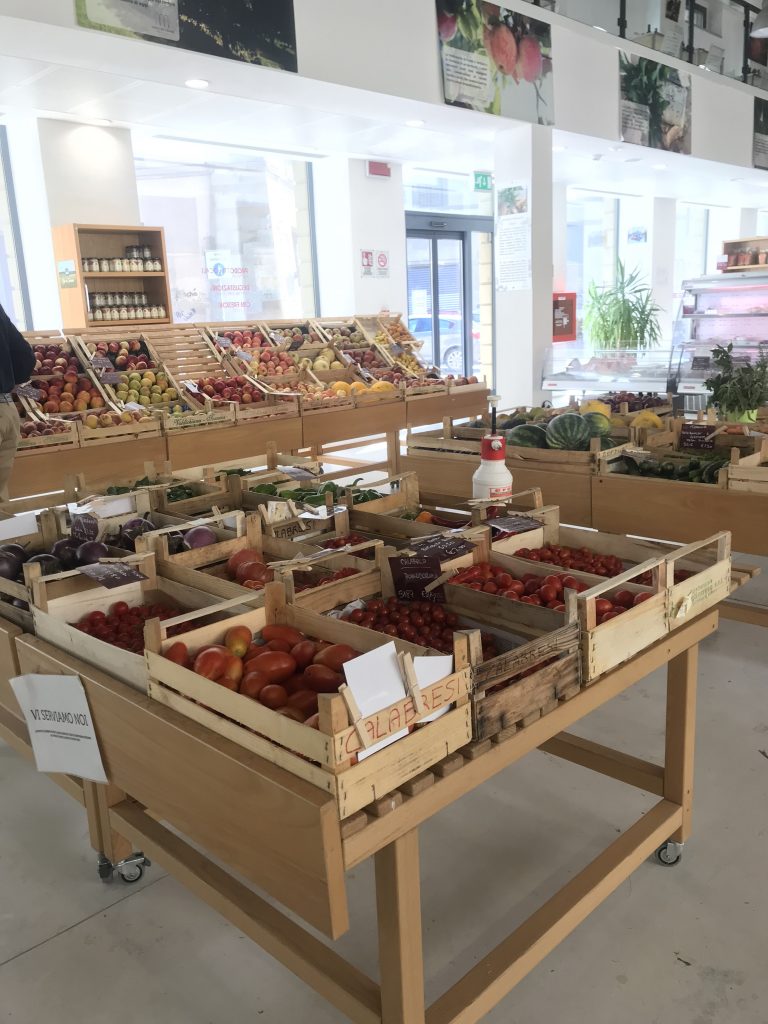Prepared by: Maddy Murray
Position: Associate
Organization: Logge del Grano
Date: 21 Nov 2019
Email: maddymurray@ou.edu
There are many differences between the culture of Italy and that of the United States. Working as an associate at Logge del Grano, a fresh produce market in the historic city center of Arezzo, Italy, has introduced me to these differences in person. Some of the most significant differences, and also some of the biggest problems in Italy, exist in the working culture. For example, Italy has a much higher unemployment rate than the United States. This is the case for many reasons, such as Italian youth choosing higher education rather than working, or the most qualified individuals leaving the country to find better jobs elsewhere. The problems with the working culture, and what is being done to solve them, is one of the topics I have been researching in this class, and working at Logge del Grano has shown me how some organizations are taking steps to remedy the issue.
Logge del Grano is a company that sells fresh produce from fields within Tuscany. Besides the fruits and vegetables, Logge also sells wine, organic pasta, meats, and cheeses. The upper level of the store is a restaurant, where they serve dishes made with the fresh produce. My role was to work as an associate in the store, as well as to visit one of the fields once a week and help the workers pick and sort through the various fruits and vegetables. I also conducted an in-person survey of people in Arezzo to document their opinions of the store. Because of my role, I was able to interact constantly with my coworkers as well as customers. This was advantageous as I was able to learn about the working culture and current situation of Italy. It was here that I first learned about not only the unemployment rate, but also about differences that are beneficial towards Italians, such as their longer paid maternity leave, paid vacation time, and lunch breaks, as described in two of my previous blog posts, titled “Similarities and Differences” and “Mid-Term Reflection.” However, there are other negative differences as well, such as the dead-end quality of Italian jobs because of closed contracts, discussed in detail in my earlier blog post “Brain Drain.” In fact, during the three months that I worked at Logge del Grano, three people, including my supervisor, left to work at a better job elsewhere. I think that the closed contracts, even in Logge del Grano, contribute to the overall unemployment rate, because once an individual’s contract ends, they are jobless until they can find somewhere else to work, which is no easy task. This is threatening not only to the livelihoods of the individuals, but also to the success of the organization, as they continuously lose skilled employees. This is one of the most pervasive current problems within Italy.
Although I mostly learned about the problems with the working culture in Italy, through observation and interaction with my coworkers I also learned about the role of Logge del Grano in fixing these problems. When I first met my supervisor, Marco, he informed me that Logge del Grano is a social cooperative, which is an organization that helps integrate previously unemployed people, especially those with disabilities, into the workforce. This includes people with developmental and learning disabilities as well as people recovering from addiction. During my time at Logge del Grano, my supervisor hired a sweet girl named Elena with a mild form of autism. At first, she had a caregiver working closely alongside her, constantly asking how she was doing and making sure she stayed on track. As time went on, the caregiver slowly spent less and less time with her, until Elena was confidently working on her own. I was able to watch her grow from a timid, confused employee to a self-reliant individual who could complete jobs on her own and understand how to find a useful task to undertake without being told. I had a similar experience in the field I worked in, called TerraViva, where I met two other individuals with learning disabilities. This experience showed me that even though the working conditions of Italy are not in the best state currently, there are organizations that are taking initiative in bettering the situation. It is unlikely that these three individuals could have found a job, at least certainly not of this high quality, anywhere else.
Although I learned a lot through my internship, I also encountered some difficulties. The language barrier was certainly the greatest one, as only one of my coworkers spoke English, and he left the company after I had been there only three weeks. Through this experience, I learned how to communicate through a “lingua franca” – a term I defined in my blog post “Multiculturalism and Idiomatic Expressions” – and through gestures and other nonverbal cues. I think this will prove helpful in my future, as I hope to become a doctor someday and may need to help patients who cannot speak English. Besides this, working alongside diverse individuals with disabilities and without, was very interesting to me, since I am a psychology student.
During my time at Logge del Grano, I learned about what it is like to work in Italy, and the opportunities available for Italians. Through my research, which included the lectures of this class as well as extensive personal observation and discussion with my coworkers, I learned that there are still problems with the system, but I also discovered that there are companies which strive to solve these issues. Other solutions could include changing the working contracts in Italy, or providing opportunities for employees to receive better promotions, but Logge del Grano’s approach is beneficial to a group of people who rarely receive opportunities anywhere, and I am glad I got to be a part of that.

